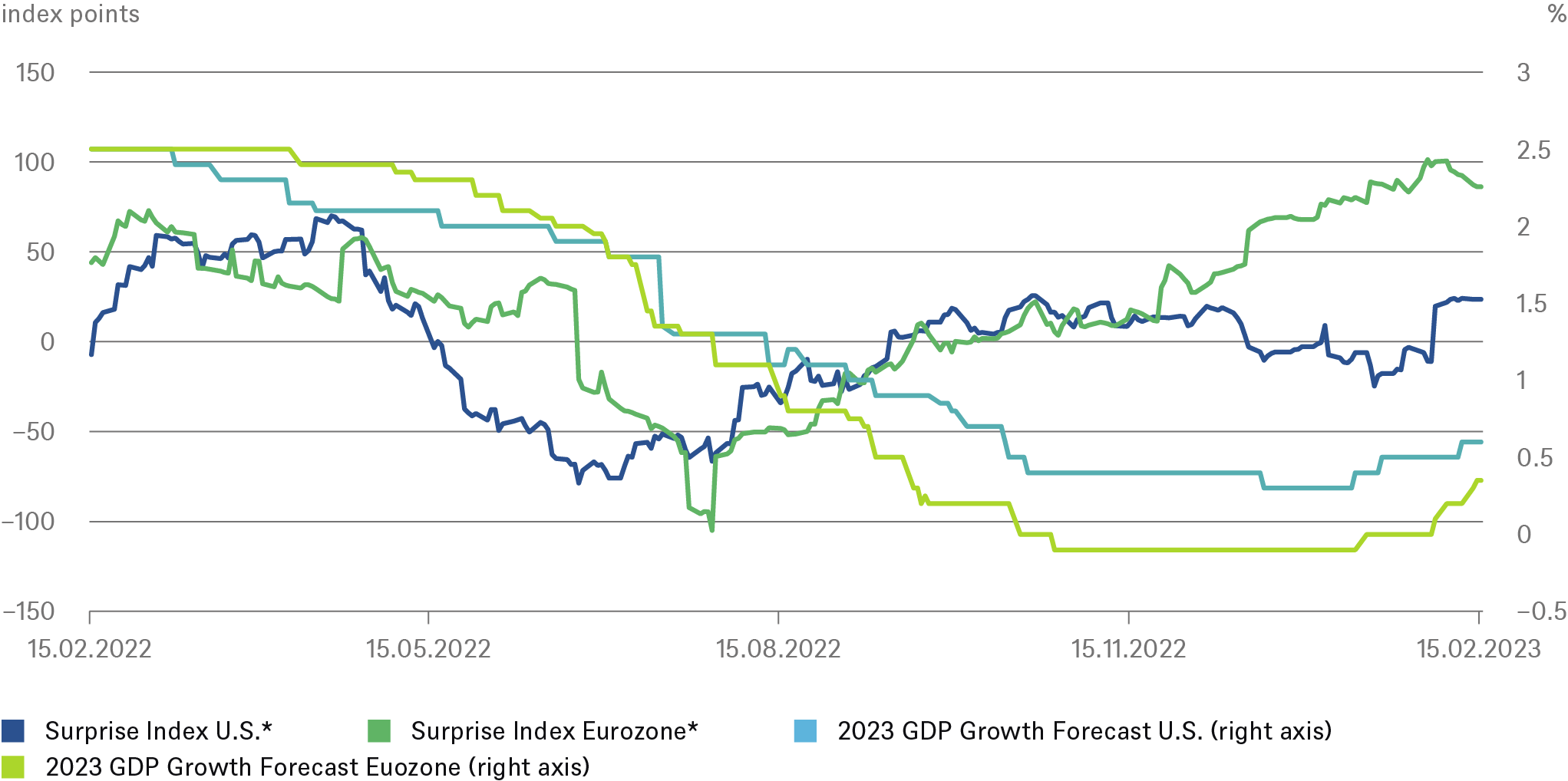- Home »
- Insights »
- CIO View »
- Chart of the Week »
- Markets hardly impressed by the Ukraine war
The anniversary of Russia's invasion of Ukraine is approaching. It exacerbated existing trends - supply bottlenecks and cost surges - and increased geopolitical uncertainty substantially. However, this is no longer really reflected on financial markets. Maybe because the impact on the West was less dramatic than initially feared. Or maybe because even during a war, habit sets in at some point, especially for those not directly involved.
Our Chart of the Week shows the development of two parameters over the past 12 months (i.e. starting shortly before the outbreak of the war) in Europe and the U.S. On the one hand, there is the expected GDP growth for 2023 for both continents. It initially slumped by around 2 percentage points, stabilized at the end of October, before rising quite rapidly since the beginning of the year, especially in Europe. Instead of a severe winter recession, which would have resulted in a slight downturn on average for the year, growth of 0.4% year-on-year is now expected. This is likely also a result of the mild winter and the surprising adaptability of companies.
Growth expectations and surprise indicator for the EU and the U.S.

* The Citi Economic Surprise Indices measure data surprises relative to market expectations.
Sources: Bloomberg Finance L.P., DWS Investment GmbH as of 2/15/23
Speaking of surprises. In the short term, they are the key driver for capital markets, as all the available information should be incorporated into prices. The chart uses the Citi Surprise Index to show how economic figures in the Eurozone have consistently surprised on the upside since the summer, unlike in the U.S. This is also reflected in the stock markets. While the Stoxx 600 is trading at almost the same level as before the war began, the S&P 500 is still 6 percentage points short, and the Nasdaq 13 percentage points short. Interestingly, oil today is trading 9% and gas 32% below where they were a year ago.[1]
But when an economy positively surprises the markets for a long time, expectations are eventually adjusted to the upside. Whether we have already reached that point in Europe remains to be seen. The index seems to be losing some momentum, but there have been several periods in the past when it held above the 50 mark for up to a year. However, "better than expected" numbers are not synonymous with good numbers. While we now expect the Eurozone to circumnavigate a recession, however it may be defined, the flip side is that the subsequent upswing will be quite anemic, if it even deserves to be called an upswing. It could still reach half a percent in the current year, but to get above 1,5% in 2024, things would have to go surprisingly well.
On financial markets, the joy over the absence of a recession could soon give way to concern about the pace of the upswing. And in all this, the war is still being nonchalantly ignored. Most market participants are likely to assume that the war will continue to be confined to the territory of Ukraine. However, the positive surprise of a viable peace perspective is likely to boost the markets less than an expansion of the war would spook them.




